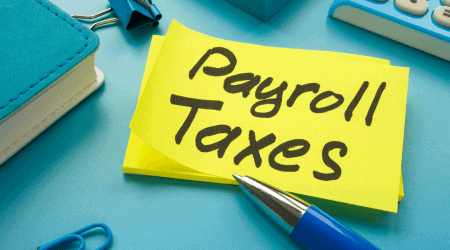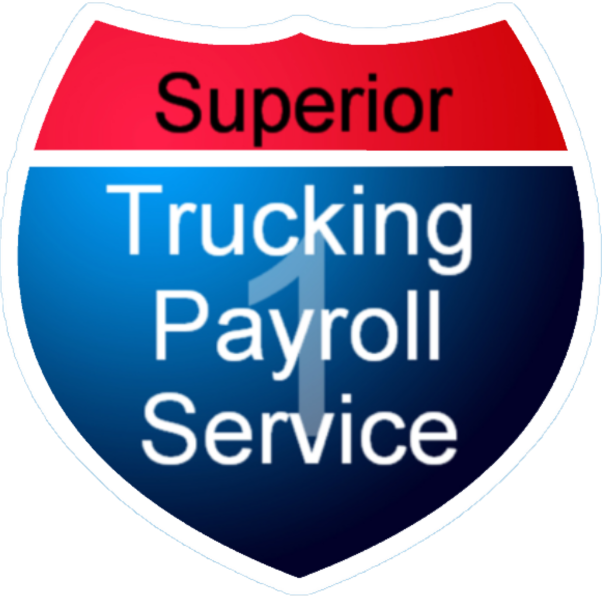What Is SUTA Tax?
What is SUTA tax, and how does it actually work for trucking companies?
If you’ve ever asked that, you’re not alone. Many trucking employers find state unemployment taxes confusing, especially when they operate in more than one state. SUTA stands for State Unemployment Tax Act. It’s a state tax paid by employers to help fund unemployment benefits for workers who lose their jobs. Each state uses this tax to support its unemployment insurance program.

This tax is different from FUTA, which is a federal unemployment tax also paid by employers. While FUTA is handled at the national level, SUTA is managed by each individual state and has its own rules, rates, and requirements.
In this article, we’ll break down exactly what SUTA tax is, who pays it, how it’s calculated, and what you can do to lower your rate. We’ll also explain how to register for a SUTA account and stay on top of your tax filings.
Who Pays SUTA Tax?
Only employers pay SUTA tax—not employees. So, if you own a trucking company, you are responsible for paying this tax on behalf of your workers.
Each state decides:
- When employers must start paying.
- How much they must pay.
- How often the tax must be filed and paid.
If you have terminals in more than one state, you will need to register and pay in multiple states.
How Is SUTA Tax Calculated?
The amount you pay for SUTA depends on two main things:
- Your state’s tax rate.
- Your business’s "experience rating."
SUTA is only charged on a portion of each employee’s wages, known as the wage base limit. This limit is different in each state. Once an employee earns more than that limit in a year, you no longer pay SUTA for that worker.
What’s an Experience Rating?
Your experience rating reflects your company’s history with unemployment claims. If your former employees often file for unemployment, your rate may go up. If you rarely have claims, your rate may go down.
Wage Base Limits
SUTA is only charged on a portion of each employee’s wages, known as the wage base limit. This limit is different in each state. Once an employee earns more than that limit in a year, you no longer pay SUTA for that worker.
To find your current rate and wage base:
- Contact your state’s unemployment office.
- Check your employer account online if your state offers one.
How to Apply for a SUTA Account
Before you can pay SUTA, you need to register with your state’s unemployment insurance program.
Here’s how to get started:
- Go to your state’s unemployment website.
- Fill out the employer registration form.
- You’ll need your company name, address, EIN, and employee info.
- Submit your application.
- Receive your SUTA account number.
Once approved, you’ll use this account number to file and pay taxes, usually every quarter.

Important note for trucking companies:
Some big-box payroll providers may wrongly tell you to register in every state your drivers live in. That’s not how it works.
You are only required to register for SUTA in the states where your company operates—like where you have offices, terminals, or warehouses.
So, if your office/terminal is in Texas and your warehouse is in Oklahoma, you’ll need SUTA accounts in those two states—not every state your drivers call home.
If you’re ever unsure, talk to a payroll provider who truly understands the trucking industry.
Tips to Lower Your SUTA Tax Rate
Here are simple ways to keep your rate as low as possible:
Reduce Employee Turnover
When workers quit or get laid off, they may file for unemployment. Fewer claims = a better experience rating. You can reduce turnover by:
- Offering competitive pay and benefits
- Providing training and growth opportunities
- Creating a positive work culture
Keep Good Records
If a former employee files a claim that isn’t valid, you can dispute it.
But to win, you’ll need accurate records about:
- Job performance
- Disciplinary actions
- Reasons for termination
Respond Quickly to Claims
Always respond on time to any unemployment claim notices. Missing a deadline can result in higher taxes, even if the claim wasn’t valid.

How to File and Pay SUTA Tax
Most states require employers to:
- File quarterly reports.
- Pay taxes at the same time.
You can usually:
- File and pay online.
- Mail in your forms and payment.
- Or, in some cases, submit in person.
Important: Each state has its own deadlines, so make sure you check your specific state’s due dates to avoid penalties.
Why SUTA Matters for Trucking Companies
The trucking industry often sees high turnover, especially with drivers. That makes SUTA even more important.
If you don’t stay on top of it, you could end up:
- Paying higher tax rates
- Facing penalties and interest
Taking a few simple steps now can save your business money and trouble down the road.
Make SUTA One Less Thing to Worry About
Now you know what SUTA tax is, how it works, and why it matters for your trucking company. From registering and filing to keeping your rate low, it all becomes easier once you understand the rules.
If SUTA has felt confusing or overwhelming—especially with different state rules—you’re not alone. Many trucking companies deal with the same frustration, especially when drivers live in one state and work in another.
Make sure your company is only registered in the states where you operate, not where your drivers live. Keep good records, respond quickly to claims, and take steps to reduce turnover. These simple actions can help lower your tax rate and reduce stress during each filing period.
Need help making sure you’re registered in the right states?
We help trucking companies set up SUTA accounts the right way—without wasting time or money on extra filings.
You’ve got a lot on your plate already. But when you understand how SUTA works, you gain more control and fewer surprises. It’s one less thing to guess about—and one more thing you’ve got handled.
Written by Melisa Bush
With over 15 years of experience in the trucking industry, Melisa is well-versed in the complexities of trucking payroll and adept at navigating special circumstances. Before joining Superior Trucking Payroll Service, Melisa worked at a trucking company, where she managed driver miles and expenses for a fleet of 50 trucks. This hands-on experience gives her unique insight into the challenges our clients face when preparing their payroll data.
Melisa’s top priority is customer service. She strives to treat each client as an individual with genuine needs, rather than just another number in the system. Her goal is to alleviate the burdens of our clients and make their daily operations smoother.

